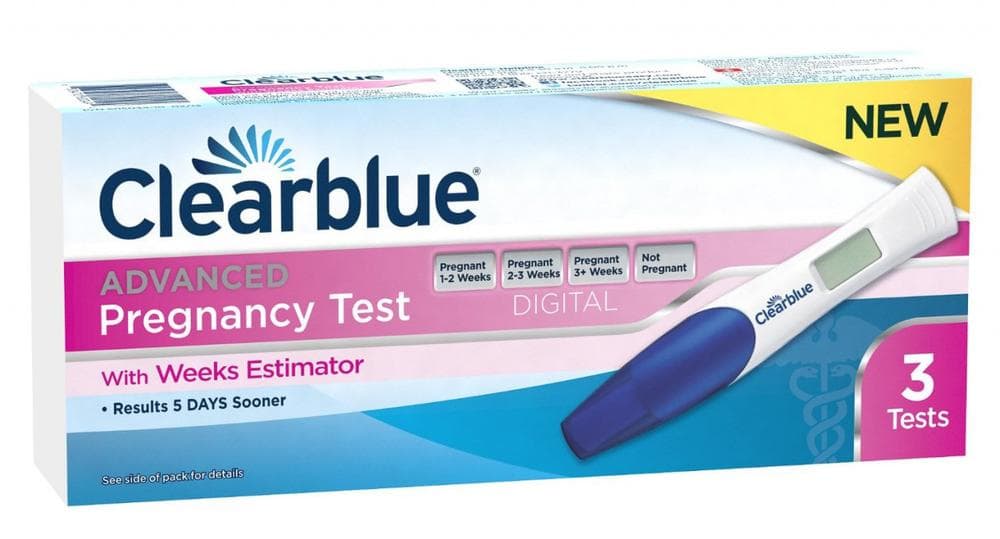Advertisement
New Pregnancy Test May Also Show Miscarriage Risk
Resume
A new pregnancy test for sale in American pharmacies takes “home testing” to a whole new level — the results show not only whether a woman is pregnant, but about how far into the pregnancy she is. An unintended aspect of the test is that it might be able to measure the risk of a miscarriage.
The test is called Clearblue Advanced Pregnancy Test With Weeks Estimator. It's been available in Europe since 2008. At the end of August, the Food and Drug Administration approved it for use in the U.S., and it's now hitting store shelves.
Usually a pregnancy test just reports whether a woman is pregnant or not buy measuring the levels of the pregnancy hormone, human chorionic gonadotropin (hCG) in a woman's urine.

When a pregnant woman takes the Clearblue Advanced Pregnancy Test With Weeks Estimator, she would see "Pregnant 1-2," "Pregnant 2-3" or "Pregnant 3+" on a little digital screen, indicating how far along she is in the pregnancy.
While it's not marketed for it, the test can also be used to indicate if a woman is at risk for a miscarriage. The British blog The Alpha Parent writes, “a lot of women use the test as a reassurance tool to indicate that their pregnancy is progressing as it should be.”
It’s estimated that between one-third and one-fifth of early pregnancies end in miscarriage. One of the key warning signs is that the woman's hCG level doesn't rise rapidly the way it should in early pregnancy. So for example, if a woman has tested positive for pregnancy and does not get a "3-plus weeks" reading after three weeks or more of pregnancy, she might be at risk.
While it's not marketed for that use, Dr. Michael Zinaman, who is on the Clearblue advisory board and is the chair of obstetrics and gynecology at St. Elizabeth’s Hospital in Boston, told the host of WBUR's CommonHealth blog, Carey Goldberg, that it could be used in that way.
"A week later after your missed menses, you would expect that this test is going to show — in normal pregnancies — a rising titer," Zinaman said. "Your result will be two to three [weeks] — it will be the next result. So, to the degree you do not see that, women should take caution and suggest that maybe 'my pregnancy is not progressing as expected,' and perhaps notify their doctor."
Guest
- Carey Goldberg, co-host of WBUR’s CommonHealth blog.
This segment aired on September 11, 2013.